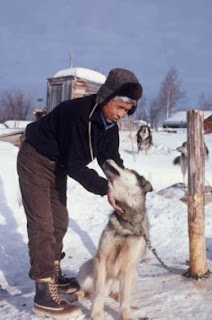Nunavut Culture
In Northern Canada, twenty-five different communities of Inuit people live in Nunavut. This Native Canadian tribe of people have inhabited Nunavut for several thousand years.
Nunavut people have a special type of Nunavut culture. Their culture is unique in Canada, and unlike anywhere else in the world. The Inuit maintain their traditional way of life even in the 21st century.
Language
Inuktitut and Inuinnaqtun are the two most common forms of the native Inuit language spoken by the Inuit people in Nunavut. These two languages are the most protected languages in Canada due to their protection under the Nunavut Official Languages Act. It is considered one of Canada's aboriginal languages, and it guarantees Inuit people will have public services and private services conducted in their native language, as needed. English and French are two other official languages spoken in Nunavut culture. In the Inuktitut language, Nunavut means “our land” and Inuit” means “the people.”
Body language is an important part of Inuit culture. Raising two eyebrows traditionally means “yes” and there is not native Inuit word for “yes”; rather, there is a gesture.
Culture
Nunavut Culture
Inuit culture has an oral tradition that can trace back hundred and even thousands of years. While language is extremely important to Nunavut culture, spirituality, family, attire, food and survival are other important aspects of Inuit culture as well.
Among st the 25 Inuit communities there is a collective sense of respect, caring, humor, longevity, responsibility kindness, and compassion. Like many Native American and Native Canadian cultural groups, the Inuit of Nunavut care deeply about their land and the animals who share their world. In addition to this great appreciate of nature, the Inuit are taught to respect and appreciate all people, no matter their race or ethnicity.
Environment
The Inuit people have survived the Arctic climate of Nunavut for centuries. They have used traditional igloos to remain warm and insulated in the harsh winter season. Ice fishing, in the winter; caribou hunting in the fall, provided most of the food for the long winter months. The Inuit traditionally fished for seal in the spring. Bird meat and eggs were hunted in the summertime.
Transportation
Traditional modes of transportation for the Inuit people were dog sleds. In the 21st century, much of the transpiration needs of the Inuit have been met by snowmobiles and all-terrain vehicles and snowmobiles.
Home »Unlabelled » Nunavut Culture
Search
Popular Posts
-
Check out the best criminal lawyer in Arizona. Top 50: 2013 Arizona Super Lawyers Top 25: 2013 Women Arizona Super Lawyers Top 50:...
-
How Online Classes Work At DeVry University, we strive to make every resource available to both on campus and online learners, whether that...
-
Mesothelioma (or, more precisely, malignant mesothelioma) is a rare form of cancer that develops from cells of the mesothelium, the prote...
-
Domain names range in cost from "free" to $35 or more per year. Google the term "cheap domain name" and you’ll get 11,70...
-
Why donate your car, truck, van, SUV, boat, or RV to the U.S. Fund for UNICEF? By supporting the U.S. Fund for UNICEF through car donati...



